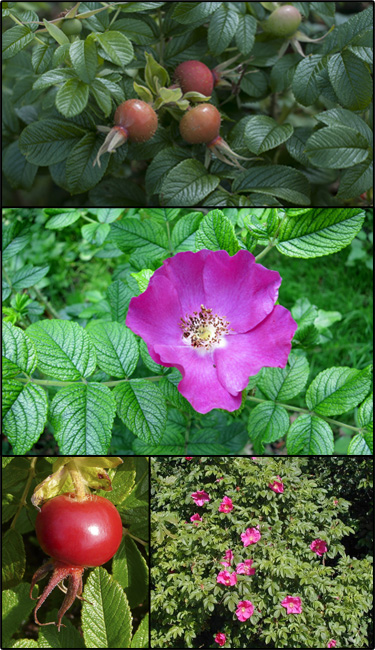Rugosa rose (Rosa rugosa)
 Common Names: Japanese rose
Common Names: Japanese roseDescription: Introduced to North America as an ornamental. Flowers used to make potpourri.
Habit: Erect; small, prickly, sprouting shrub; forms dense thickets; reaches a height of 6 ft and a width of 10 ft.
Leaves: Wrinkled, dark green in color, smooth above while pubescent and slightly sticky underneath.
Stems: Stout; covered with thin, straight sharp spines of various sizes.
Flowers: Large, single flowering but double flowers can occur in wild, 8-10 cm across, white or light to dark pink in color depending on the cultivar.
Fruit and seeds: Large and slightly flattened, shiny, deep red or orange, fleshy "rose-hips" which ripen in late summer.
Habitat: Native to Asia. Founds on sandy or gravely beaches, dune grasslands.
Reproduction: By seed via birds and vegetatively by rhizomes.
Similar species: Other species of Rose (Rosa spp.), but they lack leathery leaves, have smaller flowers and smaller hips.
Monitoring and rapid response: Digging, cutting, grazing and the use of herbicides. Most effective method is to dig it up and ensure all the rhizomes and roots have been removed. Credits: The information provided in this factsheet was gathered from the European Network on Invasive Alien Species, USDA PLANTS Database and the University of British Columbia.
Individual species images that appear with a number in a black box are courtesy of the Bugwood.org network (http://www.invasive.org).Individual photo author credits may not be included due to the small display size of the images and subsequent difficulty of reading the provided text. All other images appear courtesy of Google (http://images.google.com).
